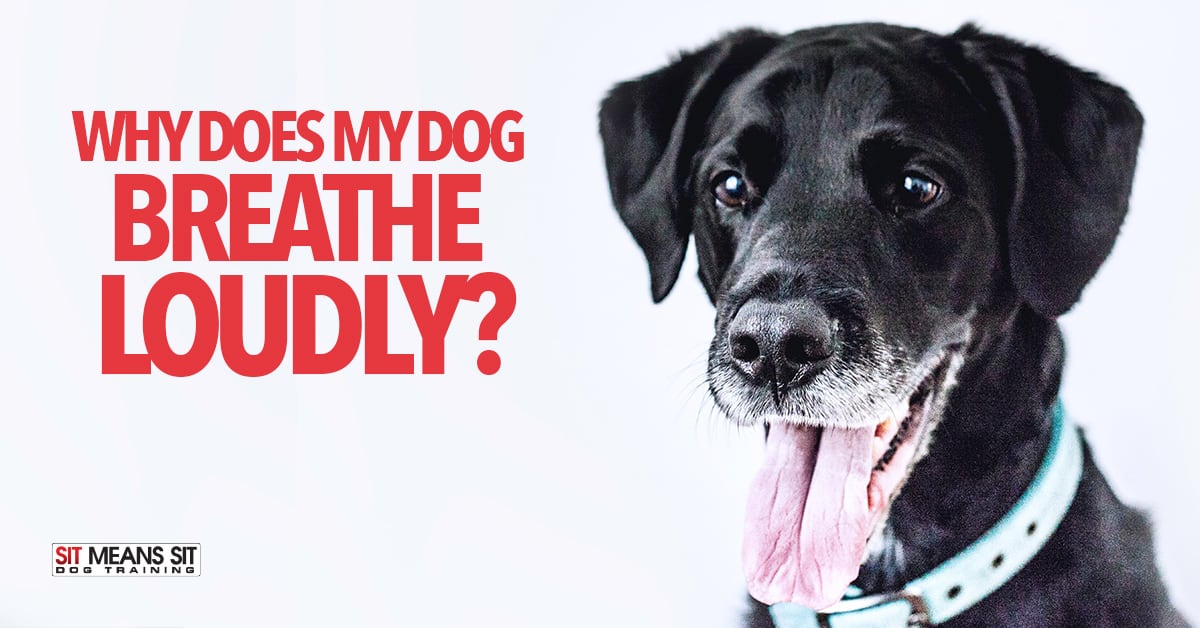
Why Does My Dog Breathe Loudly?
Loud or unusual sounding breathing coming from your pooch is definitely a reason do cause concern. As a pet parent, though, sometimes it’s hard to tell what’s normal and what needs to be brought to Fido’s attention. In this article, we’re going to breakdown what’s most likely causing your canine to breathe so loudly and what you can do about it.
What is Stertor and Stridor in Dogs
If a dog is experiencing unusually loud breathing, the cause is often due to air passing through abnormally small passageways. This creates resistance in airflow and even partial blockage in some areas. There are two types of breathing that are usually the cause of your canine’s loud breathing
Stertor: noisy breathing that occurs during inhalation, is low-pitched, and sounds similar to snoring. It’s usually caused by airways being blocked in the throat.
Stridor: high-pitched and loud breathing, usually the result of rigid tissues vibrating in the airway passage. Typically it’s caused by a partial or complete blockage of the nasal passages or voice box, or sometimes even the collapse of the upper windpipe.
Loud breathing is typical in dogs with short-noses and flat-faces (brachycephalic dog breeds). When it comes to developed paralysis in the voice box, you’ll find that to be most common in “giant-breed” dogs.
Signs to Look Out for
If your pooch is suffering from a breathing disorder, you may notice these symptoms:
- Inability to bark or change in voice
- An increase in airway sounds
- Unusually loud breathing that doesn’t go away, and can be heard without a stethoscope
- Sounds of breathing range to abnormally loud to a high-pitched fluttering squeaking
- Breathing may be accompanied by body changes (extended head and neck, open-mouth breathing)
Causes & Risk Factors
There are numerous reasons your four-legged friend could experience troubled or loud breathing; here are just a few:
- A condition that brachycephalic dogs develop
- Paralysis of the voice box (inherited or acquired)
- Tumors on the voice box, larynx, or windpipe
- Narrowing windpipe
- Inflammatory masses that emerge from the middle ear or eustachian tube
- Excessive levels of growth hormones
- Excessive tissue lining the throat
- Fluid build-up
Since the list is even longer and consists of a variety of different causes, it’s essential to bring this to the attention of your pup’s vet. As the professionals, they’ll be able to help you figure out the problem as well as hopefully give you a solution.
Diagnosis & Treatment
A thorough history of your canine’s health may be needed to verify the cause of their abnormal breathing fully. Fido’s vet may use a stethoscope to listen to specific areas for any troubling signs, trying to identify the point of maximum intensity that could direct them to the location that’s the root of the issue.
Internal imaging may also be used to asses your pooch’s cardiorespiratory system, to help rule out or confirm other causes for your canines respiratory issues. With some dogs, the cause of the issue may be more evident than others (for example, brachycephalic dog breeds).
Depending on the cause of the issue, treatment will be different for every pup. But keeping your furry friend calm in the meantime will help keep their airflow light and easier to manage until a diagnosis is made.
Just like with any other abnormalities, you notice in your furry friend, bringing it to their vet’s attention is the safest and smartest thing to do – and will help get your beloved pooch back to a healthy state of living.
